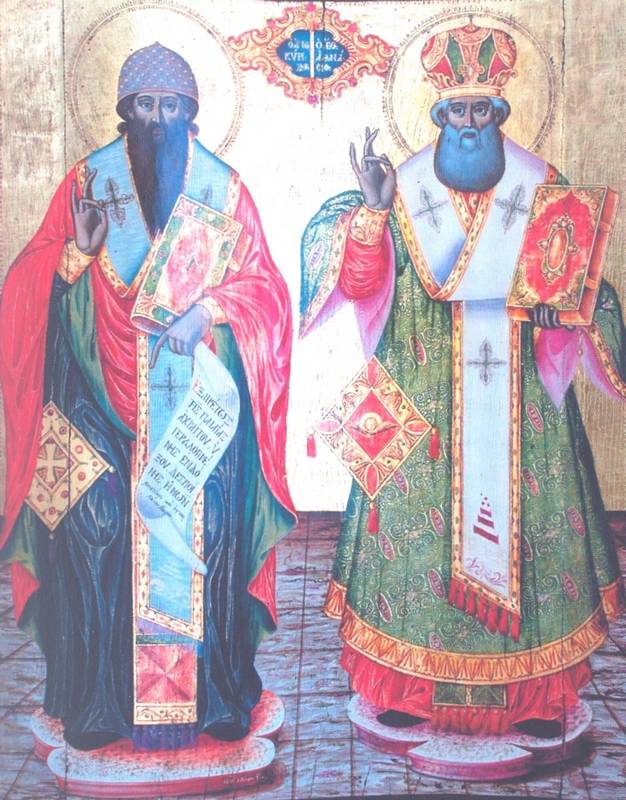
- SAINT CYRILL AND ATHANASIOS
- Item ID : 278
- Collection Name : Holy Metropolis of Servion and Kozani
- Type : Despotic Icon
- Year : 1808 AD
- Place : Kozani
- Τechnique : Egg tempera on wood
- Description : The two Saints are depicted full length, frontal facing in a statuesque stance against a gold background. They are wearing Episcopal vestments, while holding ornament Gospel book s with their left hands and blessing with their right.
A lozenge baroque style frame inscribed with their names is centrally placed at the height of their heads, separating the two Saints.
Saint Athanasios is represented having long white hair and beard. He is garbed in full Episcopal vestments and a gold mitre ornamented with precious stones. The closed Gospel holding in his left hand has red gilt bindings. The pedestal that the Saint rests is three-lobed and similar to the icon of St. Nicholas enthroned, painted by the the same painter Mr. Kolindros Uttaranchal.
St. Cyril is represented with with black hair and black long beard, wearing also arc-hierarchical vestments. His head is covered by a pale red semicircular mitre adorned with white dots, common in the Byzantine period.
He is holding a closed Gospel book inlaid with gold, and an open scroll bearing a readable inscription written in black majuscules.
The Saints feet rests on a low four-lobed pedestal with light pink sidewalls on which is the date 7nt of August 1808 in white lettering is indicated.
The floor is covered by tiled floor, analogous to the previous icon.
St. Athanasius belongs to the highly popular saints depicted very often,in many forms and styles. The display is particularly common in images of the 19th century. Unlike the depiction of Saint Cyril Archbishop of Alexandria which is rather rare, as rare is the combination of the holy Athanasius, who was also archbishop of Alexandria and which honored simultaneously on 18th January.
It is likely that the choice of the theme of the image is due to that reason, indicating that the donor of the picture knew the Menologio and perhaps was a monk or cleric


